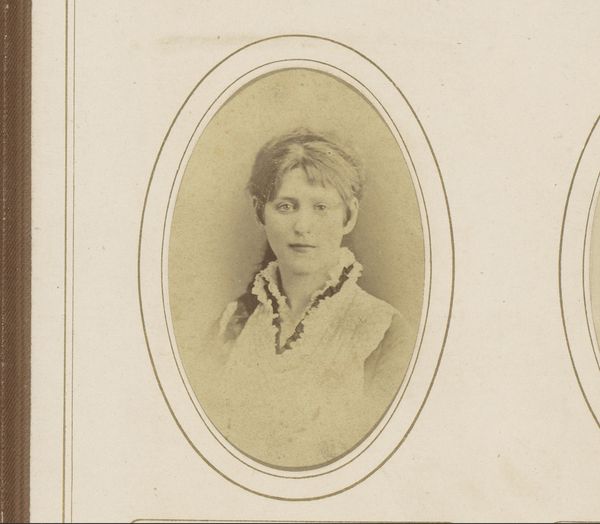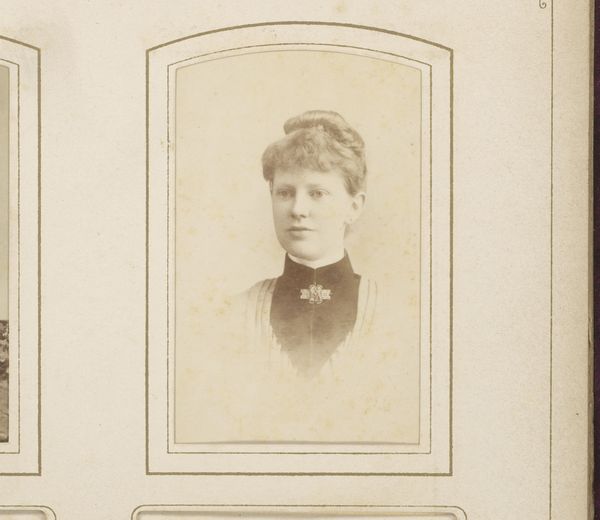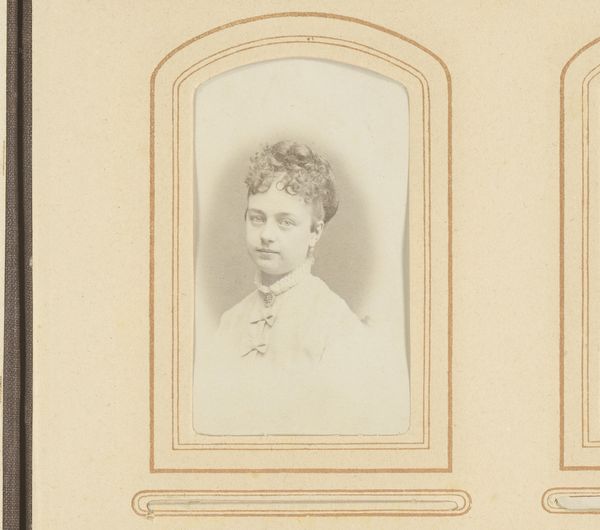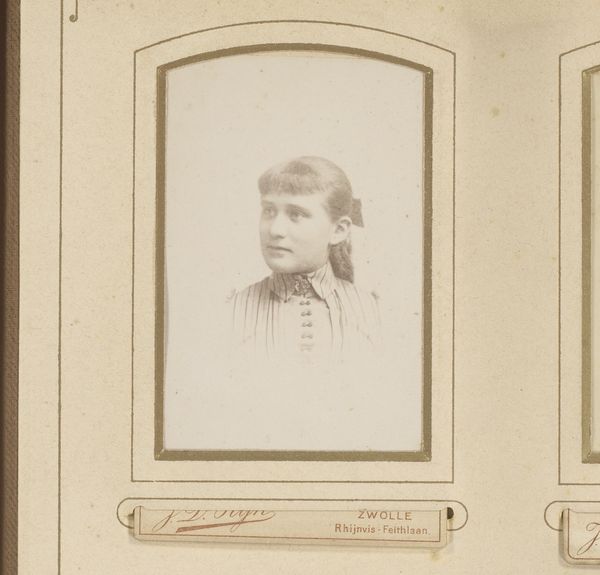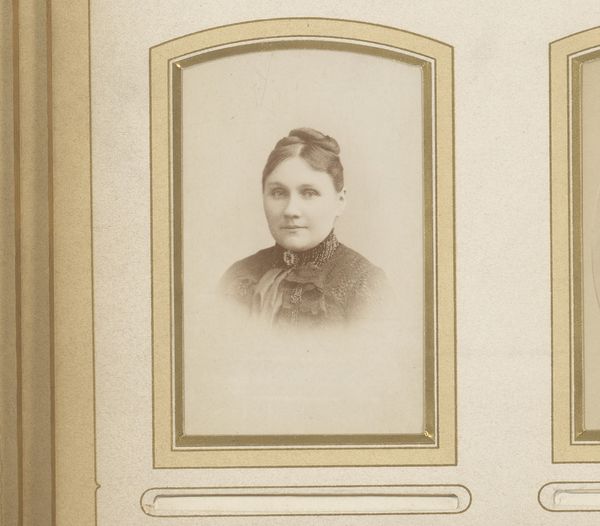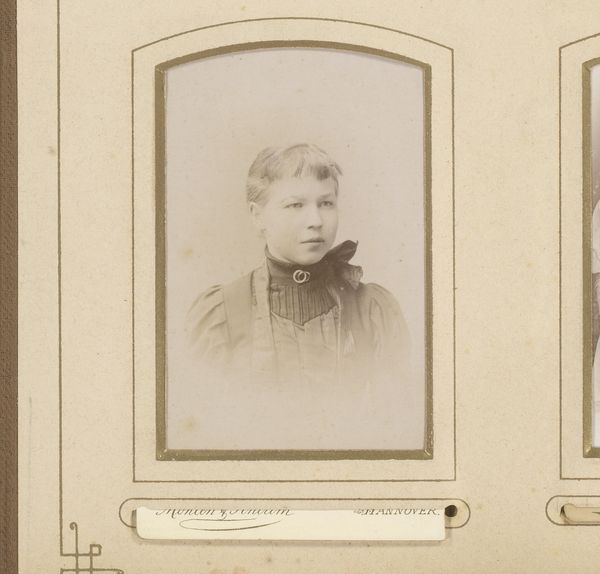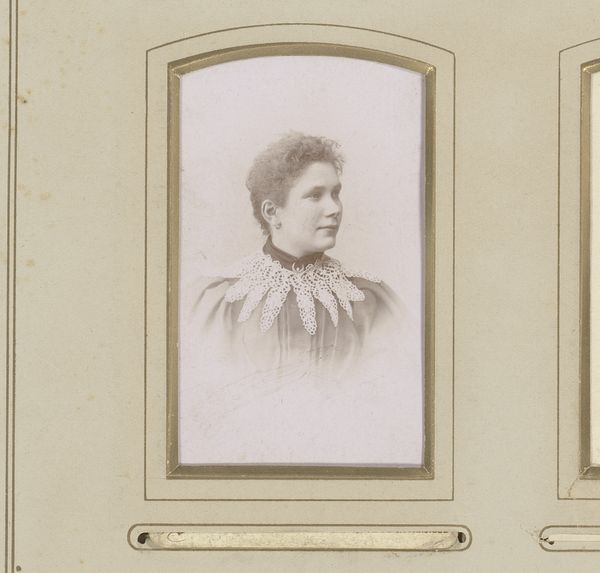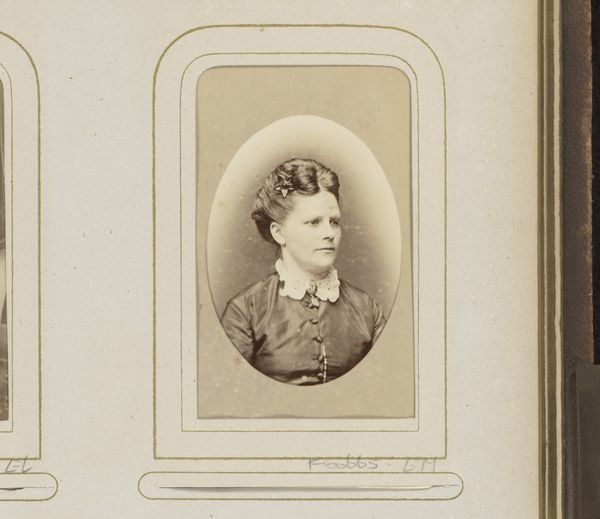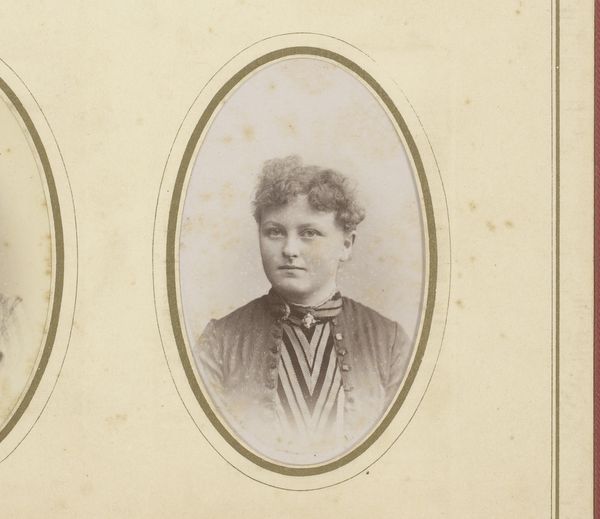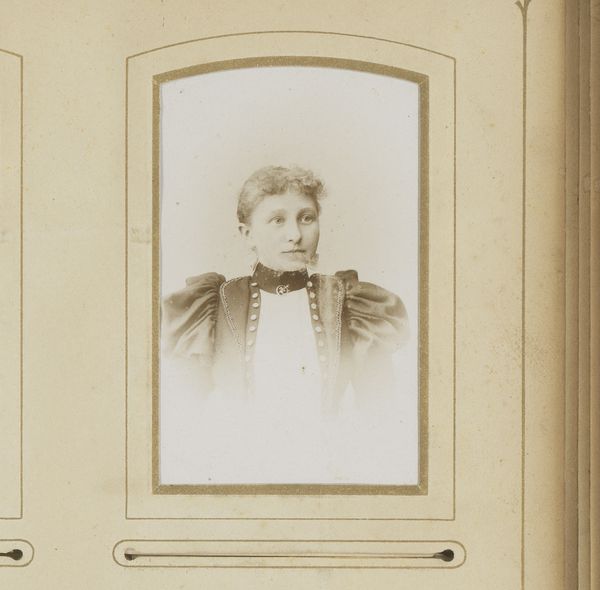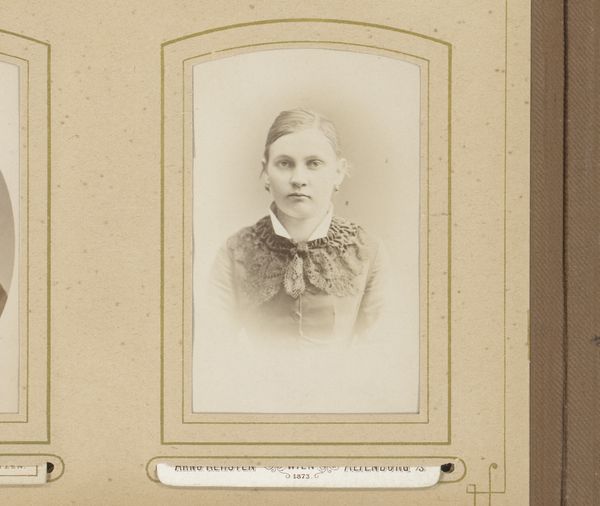
photography, albumen-print
#
portrait
#
photography
#
historical photography
#
portrait drawing
#
academic-art
#
albumen-print
Dimensions: height 81 mm, width 52 mm
Copyright: Rijks Museum: Open Domain
Curator: This is an albumen print titled "Portret van een vrouw," dating roughly between 1850 and 1900, attributed to R. Finzel. The process renders the image in subtle, sepia tones. Editor: My initial reaction is one of quiet observation. There's a formality to the pose, yet her gaze feels direct and almost challenging. The soft focus lends a certain vulnerability to her image. Curator: Indeed. The soft focus typical of albumen prints often lends an ethereal quality. I see in her gaze a reserved dignity, a certain stoicism that echoes the societal constraints placed upon women during that era. Note the intricate lace at her neck, the modest attire--carefully chosen signifiers. Editor: Precisely. The very act of commissioning such a portrait suggests a desire for self-representation within a rigidly structured world. The albumen print, a relatively new medium at the time, also represents technological advancements and shifting class structures, allowing a wider spectrum of society to engage in visual representation. Who has access, who can be represented, and how. Curator: The visual language speaks of status, yet her expression hints at untold stories. Look closely at her eyes; there's a depth there that transcends mere representation. The way the light catches the pearl-like embellishments on her garment adds layers to her character, giving clues of potential wealth, sophistication, or an allegiance to social aesthetic rules. Editor: I find myself wondering about the narratives left unsaid. Her posture, seemingly straight-laced, invites critical exploration on the societal pressures during the Victorian era, where the expectations of behavior, and performance are coded so carefully in garments and presentation. The composition leads me to explore social commentaries on portraiture in its relationship with cultural and individual identity. Curator: These details echo much broader trends in society at that point in history. Considering all this imagery together, photography then was far more symbolic than it can seem today. It was so enmeshed with both social status and an awakening consciousness. Editor: Absolutely. Reflecting on it, this artwork not only captures a moment in time, but serves as an intersection of technology, social change, and, perhaps most importantly, resilience. A representation of the past that demands engagement and discussion in the present.
Comments
No comments
Be the first to comment and join the conversation on the ultimate creative platform.
